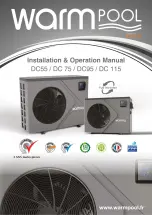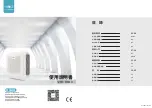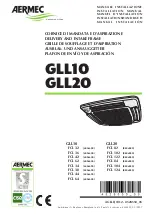
10
4.3 Installation and Test of Drain Pipe
4.3.1 Precautions When Doing the Piping Work
(1)
Keep piping as short as possible and slope it downwards at a gradient of at least 1/100 so
that air may not remain trapped inside the pipe.
(2)
Keep pipe size equal to or greater than that of the connecting pipe.
(3)
Install the drain piping as shown and take measures against condensation. Improperly
rigged piping could lead to leaks and eventually wet furniture and belongings.
Extension drain piping
(commercially available)
Insulating tube
(commercially
available)
Indoor unit
drain hose
Insulating tape
(accessory)
Fig.6
4.3.2 Installing the Drain Pipes
(1)
Insert the drain hose into the drain socket up to the base, and tighten the clamp securely
with the tape.
(2)
Insert the drain hose into the drain outlet, and tighten the clamp securely with tape.
Tighten the clamp until the screw head is less then 4mm from the hose.
① -
Metal clamp (
accessory
)
② -
Drain hose (
accessory
)
③ -
Grey tape (
accessory
)
Insulate the pipe clamp and the drain hose using heat insulation sponge.
① -
Metal clamp (
accessory
)
② -
Insulation sponge (accessory)
(3)
When unifying multiple drain pipes, install the pipes as shown below. Select converging
drain pipes whose gauge is suitable for the operating capacity of the unit.(take the cassette
type unit for example)
100 mm
1
0~675 mm
1
Fig.7
① -
T-joint converging drain pipes
1
2
3
≤
4mm
1
2












































